Back in the 80s, you could buy a new computer. What would that get you?
- Chassis (the big metal box)
- Power Supply
- Motherboard / processor / RAM / BIOS+ROM
A few common things it could do out of the box:
- Connect to your keyboard
- Connect to Electricity
- Power on
That’s…it. No, I’m not talking “BOOT TO WINDOZE” or “DOS” or anything else. No monitor, no sound card (tho there is a built in speaker). Just the above.
So if you wanted to do anything, even common stuff:
- Add a video card to use a monitor
- Add a parallel port to use a printer
- Add a sound card for legit tunes
- Add a COM port for whatever
- Add a Modem
- Add a controller card to use floppy drives
- Add a controller card to use disk drives
- Add a controller card SO THE COMPUTER WOULD REMEMBER THE TIME AND DATE (yes, legit)
- I really love lists
Well, you’d need to buy a card for that.
It’s easy to see that the average consumer would max out the 5 slots on the OEM machine, and IBM realized they messed up.
Enter: The IBM 5161
I’m pretty sure mine is a clone, it doesn’t line up with exactly what I’d expect. That said, I’ll sell it to you for top dollar — and because you’re a blog reader I’ll give you a discount code: JKLMAOFOOLEDBAD.
This unit used a massive cable (thick as a thumb) to connect the host computer and add an additional 8 slots. Minus one in the host machine for an “Extender” card and another for the “Receiver” card.
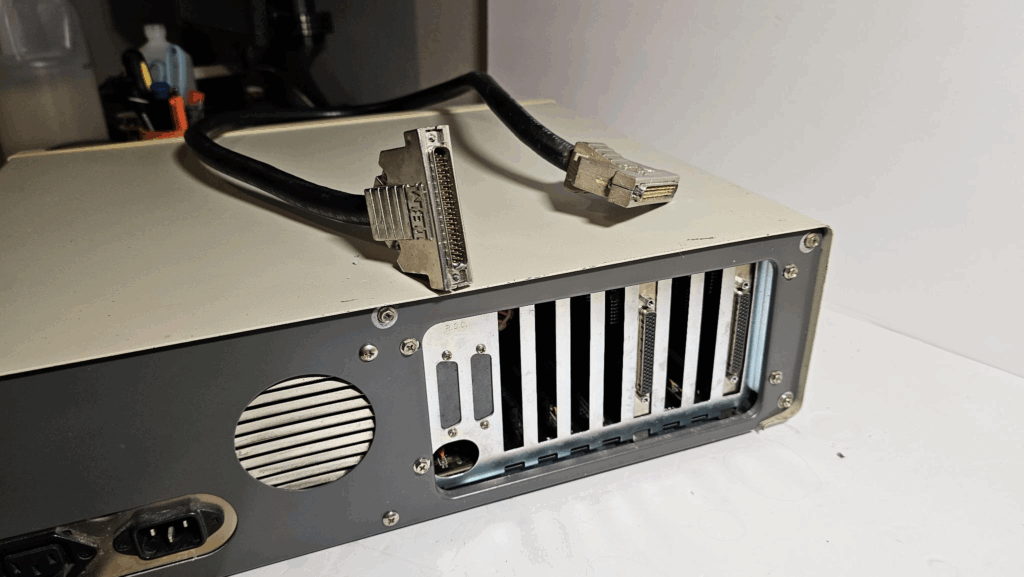
Here’s my image of the cable — both cards are also in this one machine. This is never how you’d use it, but I installed them for shipping. One of them would be in an actual computer.
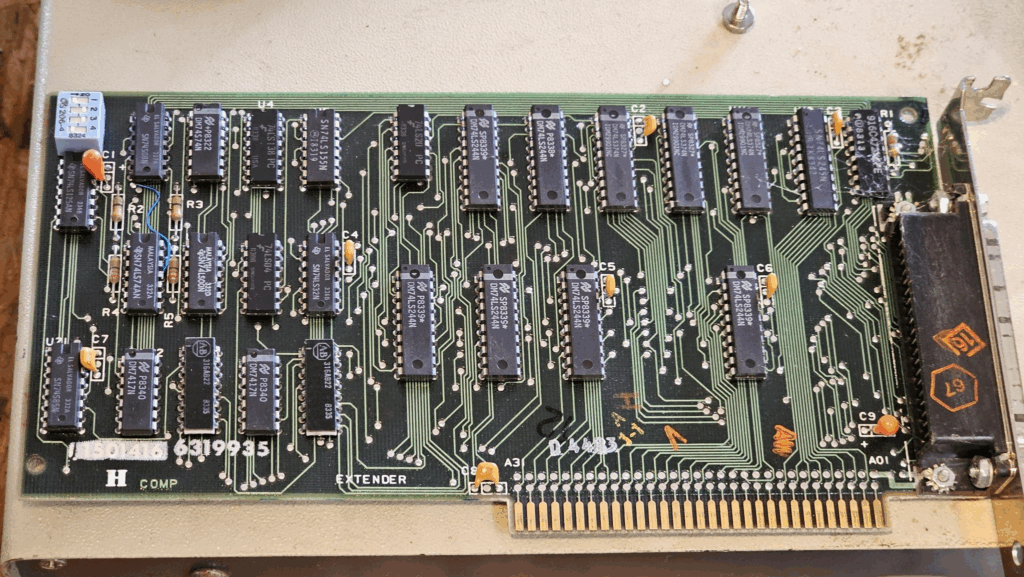
Here’s the extender card. It’s cool when you see old kit without microcontrollers and epoxy blobs (unless one of them is a microcontroller).
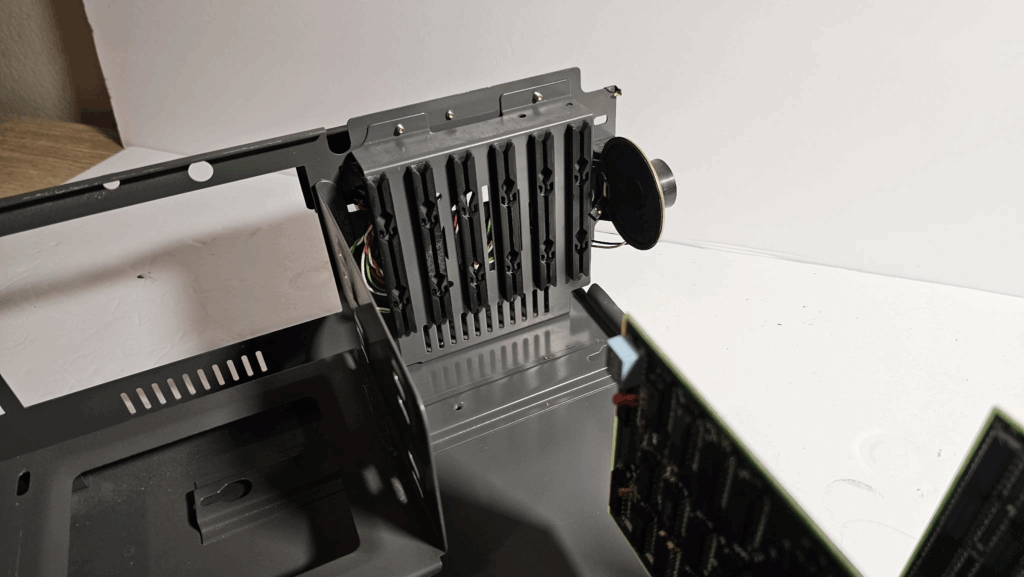
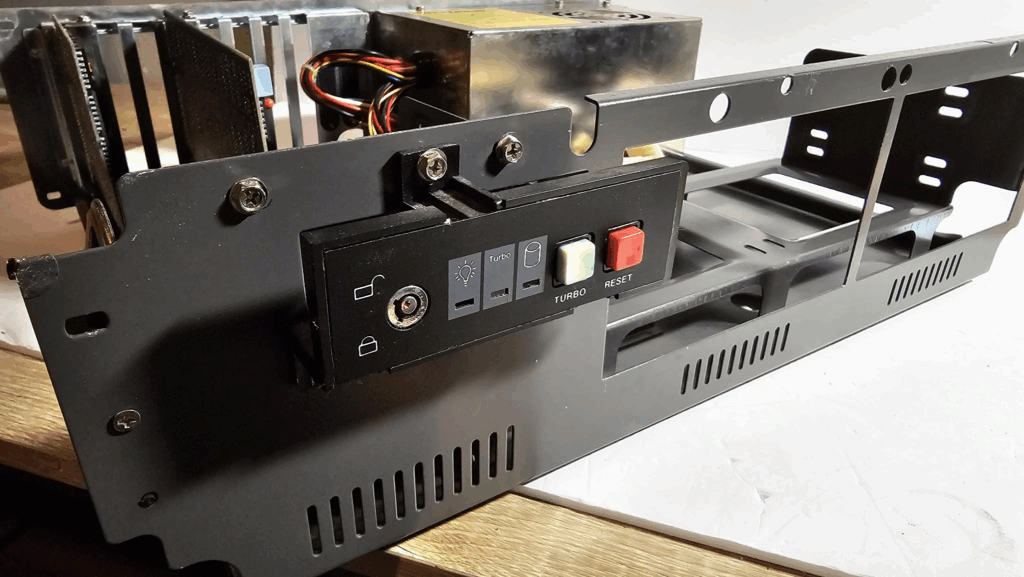
The front features a speaker and a ton of jumper wires for Reset, Turbo, HDD and Power lights — but none of those actually are used on these units, so it’s a touch odd that they even included them.
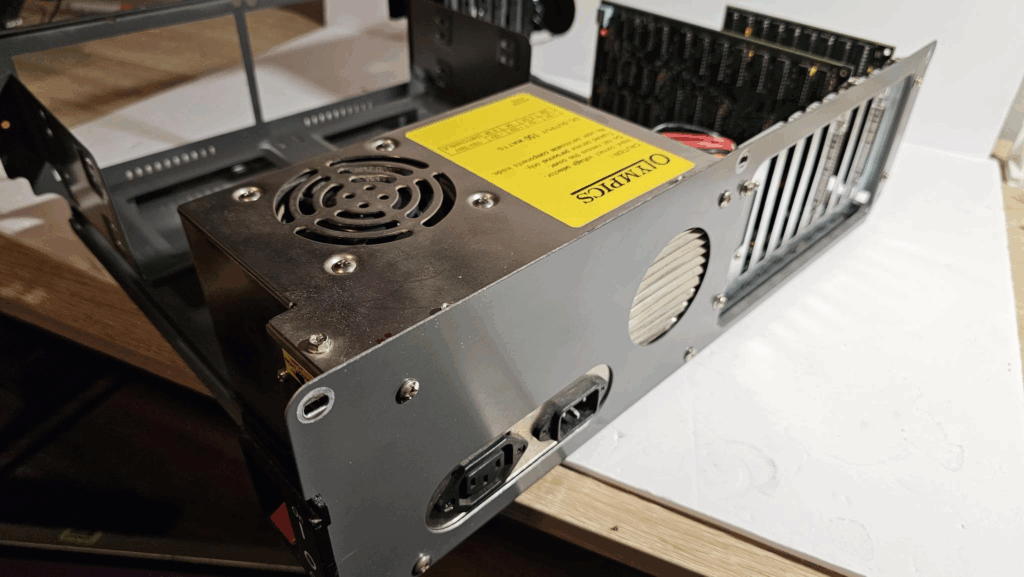
Mine has an Olympics brand power supply. No idea if that’s good or bad, but it turns on. Of note: There is a normal power cable spot, and then one that looks opposite of normal. Back in the day, they had better cable management options. That’s right, You could power a downstream machine with a special cable that went from this machine to the next one… Or a monitor.
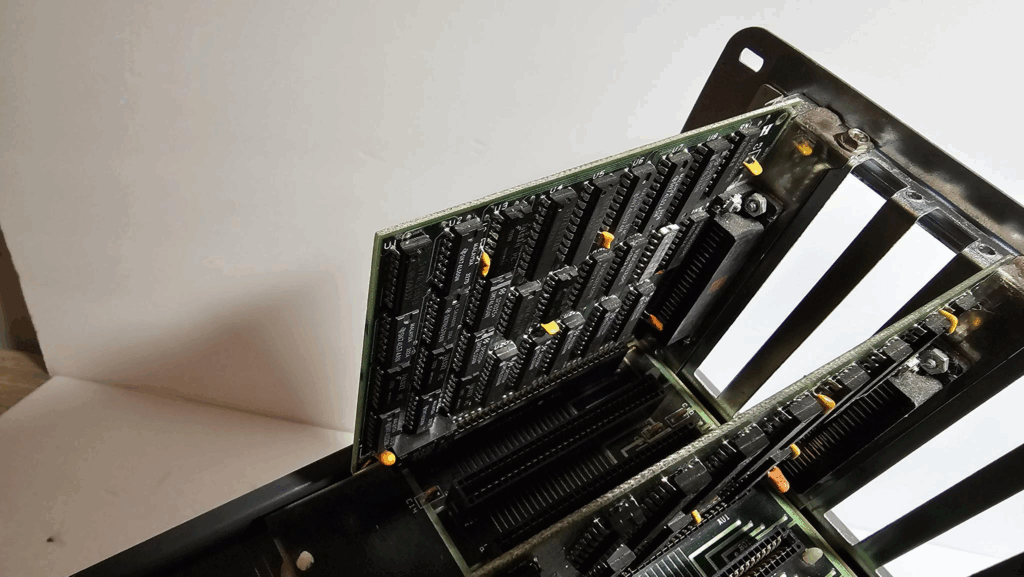
Here’s the Receiver Card
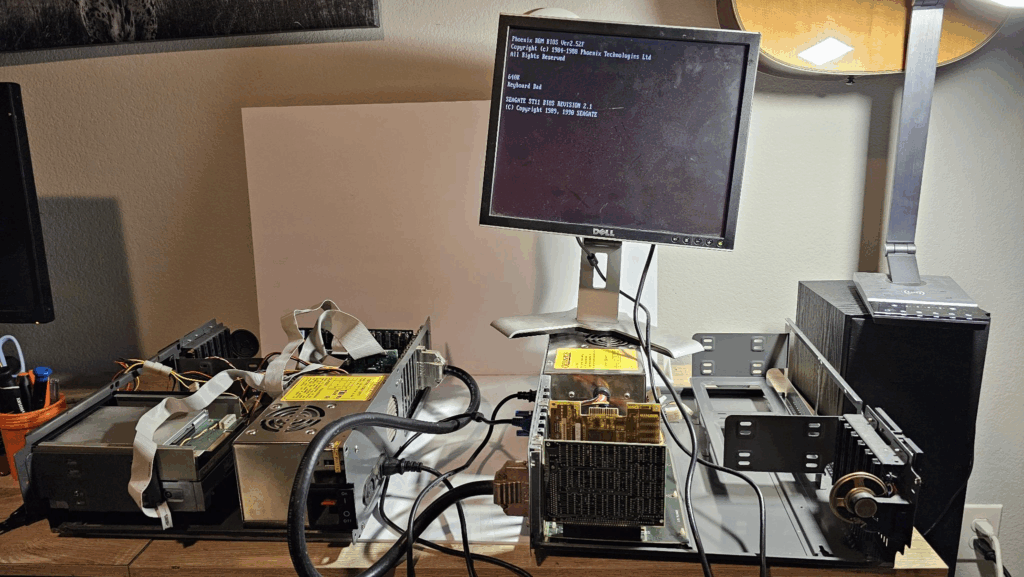
Here’s mine, the 8088 on the left (truthfully, a V20, but same idea) connected to the 5161 or clone. The video card is in the unit on the right, and the monitor is hooked to that. Who knew an 8088 could do VGA?!
So…. what does it do? What doesn’t it do?
On it’s face, it looks like an entirely different computer that would sit on your desk, stacked up with another one. Internally, it’s much different. No RAM, BIOS, Processor, keyboard connector, etc. It’s quite literally a chassis with an ISA backplane.
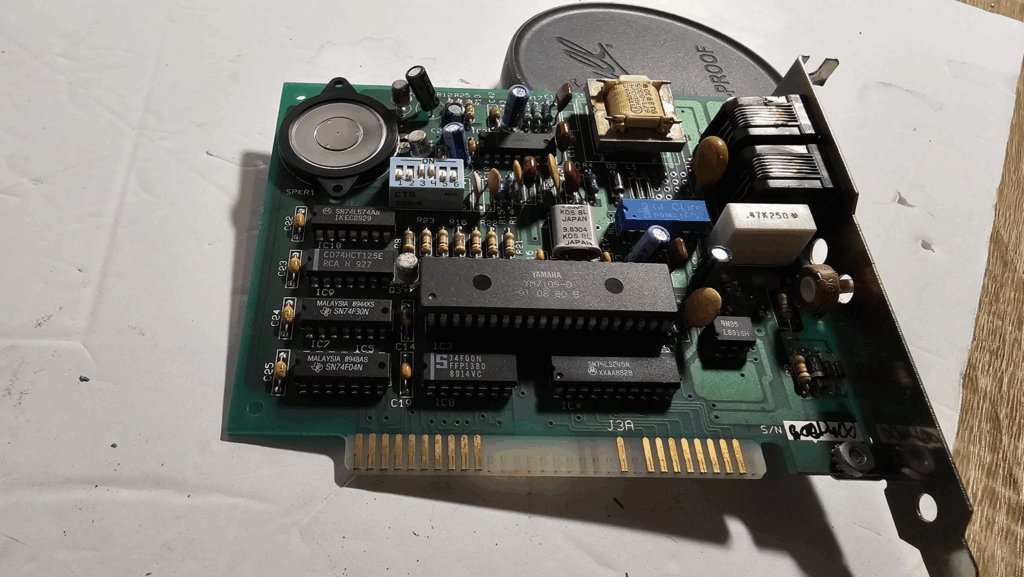
Back before you had the modern X1 cards (or whatever they are now) with tiny little connectors, you had this — an 8-bit monster full of the full processor address and data bus in parallel. In theory, you can run the bus from one machine direct to another machine — and with today’s twisted pair technology it would probably be a lot easier and go much further.
Back then, the slower bus speeds and less amazing tech left you with cross talk and other issues. So why all of those ICs on a board?
- Signal buffering — longer bus (physically, the cable is the bus) means it takes longer and voltages drop — potentially below logic levels
- Timing alignment — Longer the trace, more the skew in signaling. It syncs the critical control lines, like MEMR, MEMW, IOR and IOW.
- Bus Isolation — Protects the host machine from issues that may occur in the extender box
- Power Distribution — the extender box has it’s own power supply, allowing you to run more devices than the host computer’s PSU alone
- Drive / control signals — does level shifting for these
- Cable connector translation — A full ISA passthrough would work if not for the above issues, so this does the cable to ISA translation.
I’ve used these machines and I’ve just learned that these even exist!
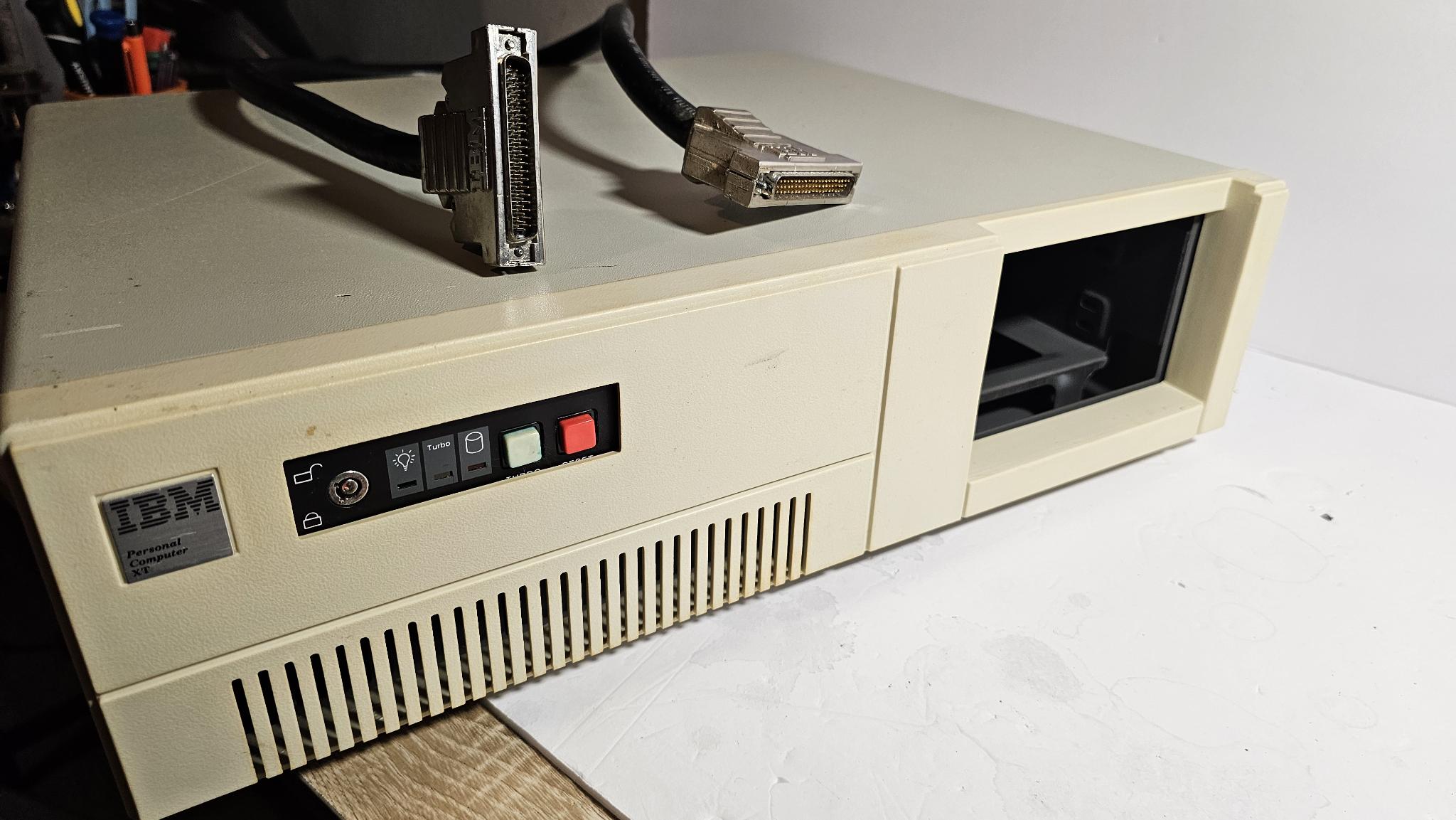
Leave a Reply